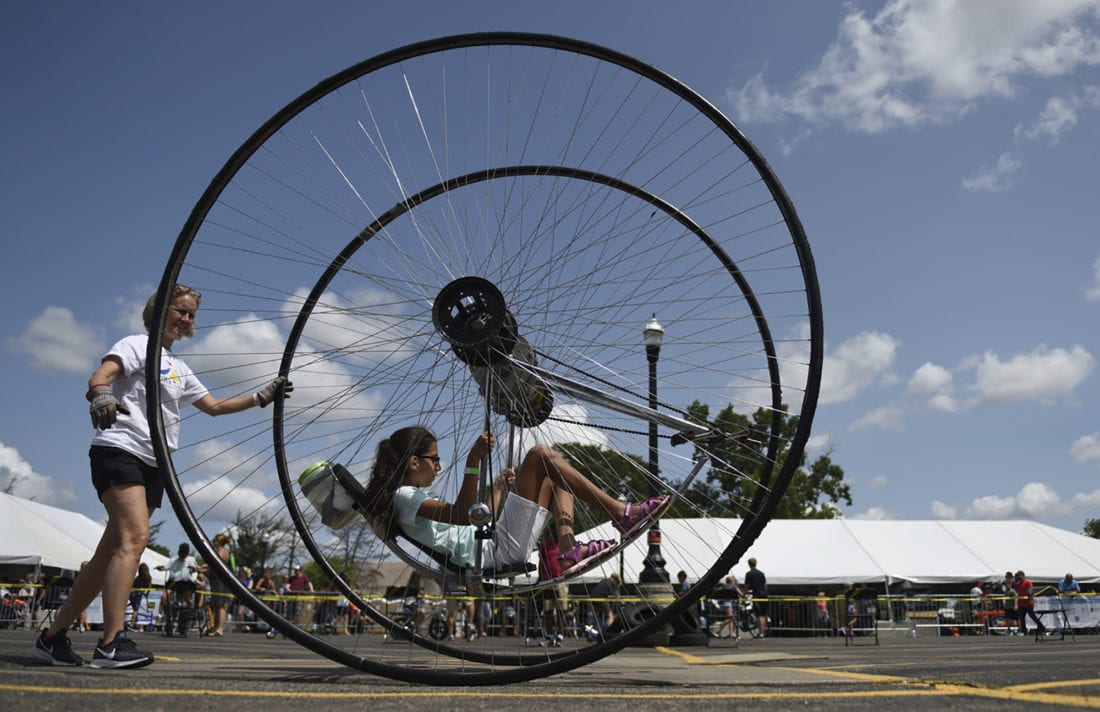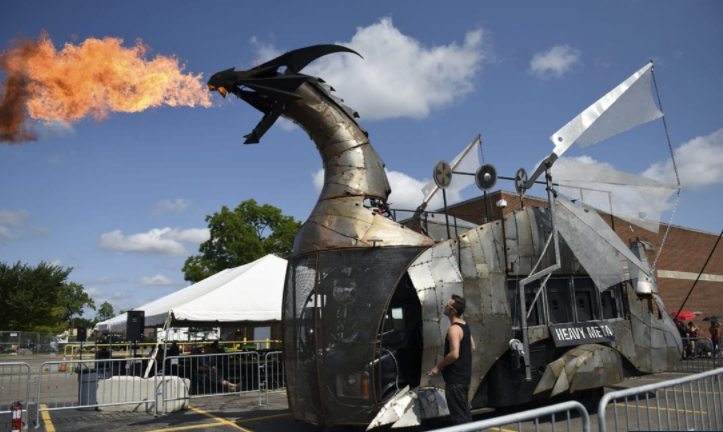Yet a focus on pure efficiency may be short-sighted, especially if your team or organization is struggling to find a collective purpose. It turns out that emotion sharing—and not just information sharing—is a powerful yet often-overlooked part of building a group identity.
That’s a key takeaway from an in-depth study of one of the most eclectic groups of all: the Maker movement, a loose collective that began with electronics hackers and hobbyists and grew to include people with seemingly nothing in common—crafters and physicists, bakers and blacksmiths, 3D-printing whizzes, and do-it-yourselfers of all stripes.
“Emotional contagion”
Pre-pandemic, Maker Faire gatherings around the world attracted tens of thousands of people to tinker away the day and marvel at art cars and fire-breathing dragon robots. These experiences inspired contagious emotions, binding the diverse makers to each other, and to the movement, researchers found.
“What we learn from those who attend Maker Faires is the power of emotional contagion: the feelings of ‘We’re all in this together, we’re all Makers with a shared passion to experiment and bring new things to life.’ As a participant put it, ‘we’re all made of glitter,’” said Andreea Gorbatâi, an assistant professor of management at Berkeley Haas and lead author on the study. “Activities that might seem frivolous but elicit emotion actually go a long way in revitalizing people’s energy and connection to their teams and to their shared identity, as a community or organization.”
Activities that might seem frivolous but elicit emotion actually go a long way in revitalizing people’s energy and connection to their teams and to their shared identity, as a community or organization. —Andreea Gorbatâi
Growing pains
It may seem a big leap from the carnival atmosphere of a Maker Faire to a disconnected team struggling to launch a new product, but at the root of Gorbatâi’s study—published in Organization Science—is a common problem faced by organizations as well as emerging fields or industries. Founders or pioneers begin with a clear purpose or passion that’s shared with those around them. As the company or field gains recognition and legitimacy, it starts expanding its membership base and reach. But it also attracts newcomers who may be in it for different reasons than the pioneers, which can fuel internal conflict, an identity crisis, and even a splintering into factions.
One common way to counteract this double-edged sword of legitimacy is to clearly define the boundaries of the organization or field. For example, the organic food movement, Gorbatâi noted, shifted from a focus on small-versus-big growers to a certification process after the industrial growers jumped on the bandwagon.

Nadine Ayoub, 10, of Dearborn, Mich., rides in a giant wheel at the Maker Faire in Dearborn, Mich. on July 28, 2018. (Tanya Moutzalias/Ann Arbor News via AP)
Field-configuring events
Another way to build cohesion is through “field configuring events”—conferences, tournaments, festivals, trade shows, or team activities away from everyday work that provide collective experiences and meaning. At Maker Faires, computer hackers and math nerds mingle with vegetable picklers and hula hoopers. Even large corporations, such as General Motors and Bose, joined in as event sponsors.
Gorbatâi wanted to better understand how the Makers built this “inclusive and expansive collective identity.” With her research interests in innovation and nontraditional forms of organizing—such as crowdsourcing and Wikipedia—she was intrigued when a Makerspace workshop opened in her neighborhood a decade ago. Her initial visit grew into a longitudinal case study, co-authored by Cyrus Dioun of the University of Colorado Denver Business School and Kisha Lashley of the University of Virginia McIntire School of Commerce.
The researchers first looked at how coherently the Maker movement was described by the media, analyzing newspaper articles from 2005—when the term Maker was coined by the launch of O’Reilly Media’s Make magazine—to 2017. Using a text-mining technique, they found that articles published in the immediate aftermath of Maker Faires, or in areas that hosted multiple fairs, told much more consistent stories about the movement than those that weren’t linked to an event. That showed the importance of these collective events in shaping the group’s identity. They also found that as the movement gained recognition and legitimacy—as measured by the volume of press releases from local municipalities and other government sources—an increasingly wide range of individuals and organizations got involved.
Emotion and empathy
To get deeper into the mechanics of how all those different people and groups adopted a shared Maker identity, Gorbatâi and Dioun attended Maker Faires and visited Makerspaces and hackerspaces to observe what took place, and interview attendees and exhibitors. The authors then coded the interviews based on the emotions expressed, as well as how often people re-told stories put forward by the Maker Faire organization, such as “everyone is a maker.”
What dominated in the data wasn’t information about skills people had learned: Time and again, people told stories that reflected sharing emotions and recognizing a shared passion for learning, playfulness, and experimenting in other participants’ crafts—experiences of what Gorbatâi calls emotional contagion, and, respectively, empathetic recognition. “Everybody is here because it’s what they wanna do. And that energy is kind of catchy,” said one participant. “The fact that somebody is excited about something helps you get excited about something.”
The fact that somebody is excited about something helps you get excited about something. —Maker Faire participant
The data also suggested that emotional contagion made people more open to learning from diverse participants, while empathetic recognition led them to see the commonality in values across a wide range of skills and backgrounds. Thus, the skeptical engineers teaching geometry with fractal tiles said they came away with admiration for the “hippies” at another exhibition booth after chatting about the technology and mechanics they used to redesign their hula hoops.
So, what can managers do to foster that sense of inclusiveness and empathy that people experience at Maker Faires? Can it be done in an era of remote work, when it’s just not possible to get the marketing and engineering teams together to build marshmallow towers?
“The importance of emotion for identity and belonging in organizations shouldn’t be downplayed, and shouldn’t be forgotten when we think of online events,” Gorbatâi says. “Finding ways you can share positive emotion together can help you identify with your organization or your team.”
The importance of emotion for identity and belonging in organizations shouldn’t be downplayed, and shouldn’t be forgotten when we think of online events —Andreea Gorbatâi
For a medical company, that might be telling stories of successful patient treatments, or for a fitness company, sharing stories of how people’s lives were improved. “Anything that reminds you of your purpose or shared values,” she said. More generally, having periodic rituals of genuine connection and empathy can revitalize the bonds of our connection to each other, and to our shared identity, Gorbatâi added.
Or sometimes, it could be just sharing a laugh. “Cutting meetings down to the bare minimum might seem efficient but it cuts out meaningful moments of human emotion. Online, even simple things like having a silly-hat-themed meeting and keeping the sound on so we can hear each other’s laughter again might bring people together.”


